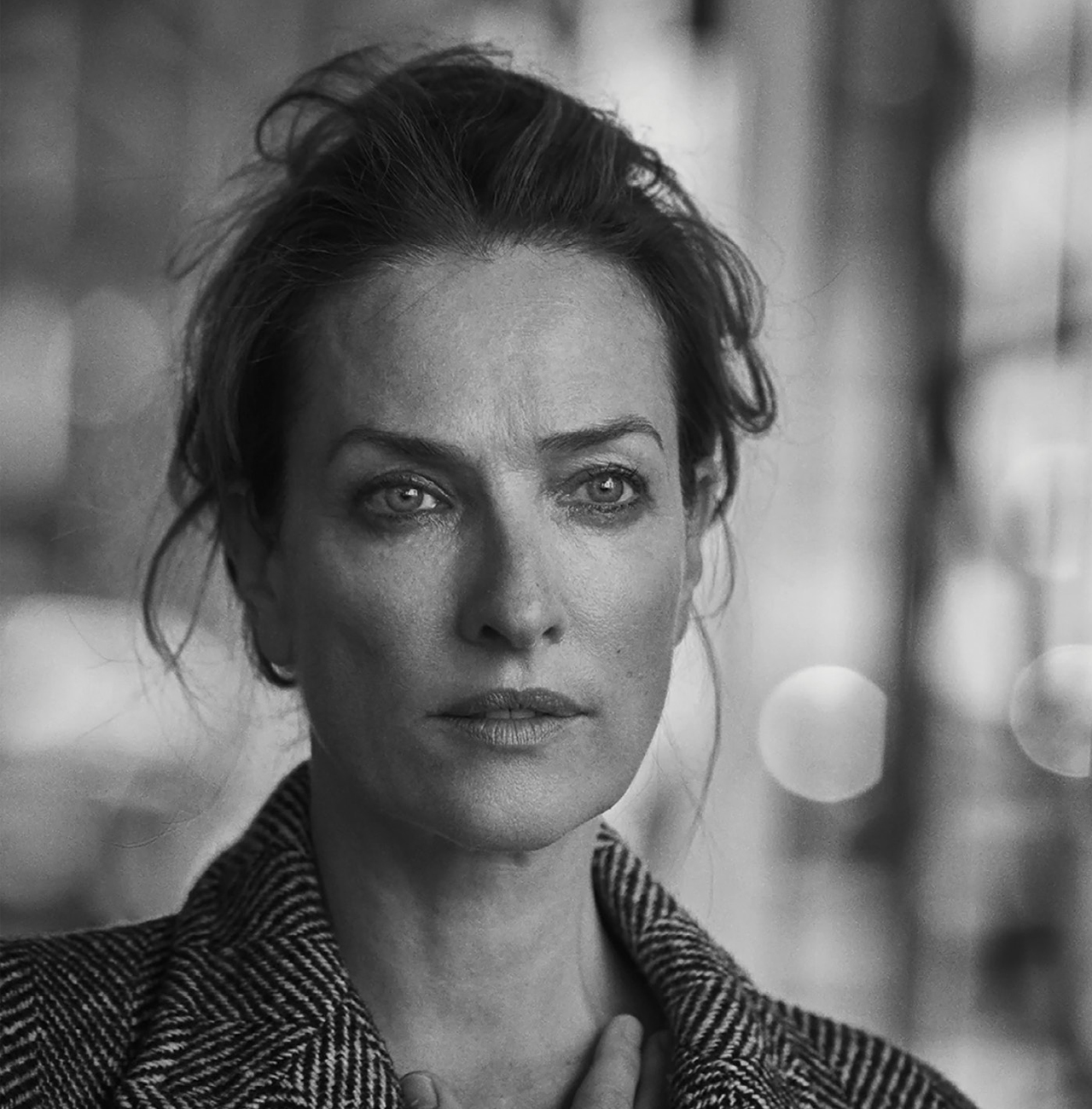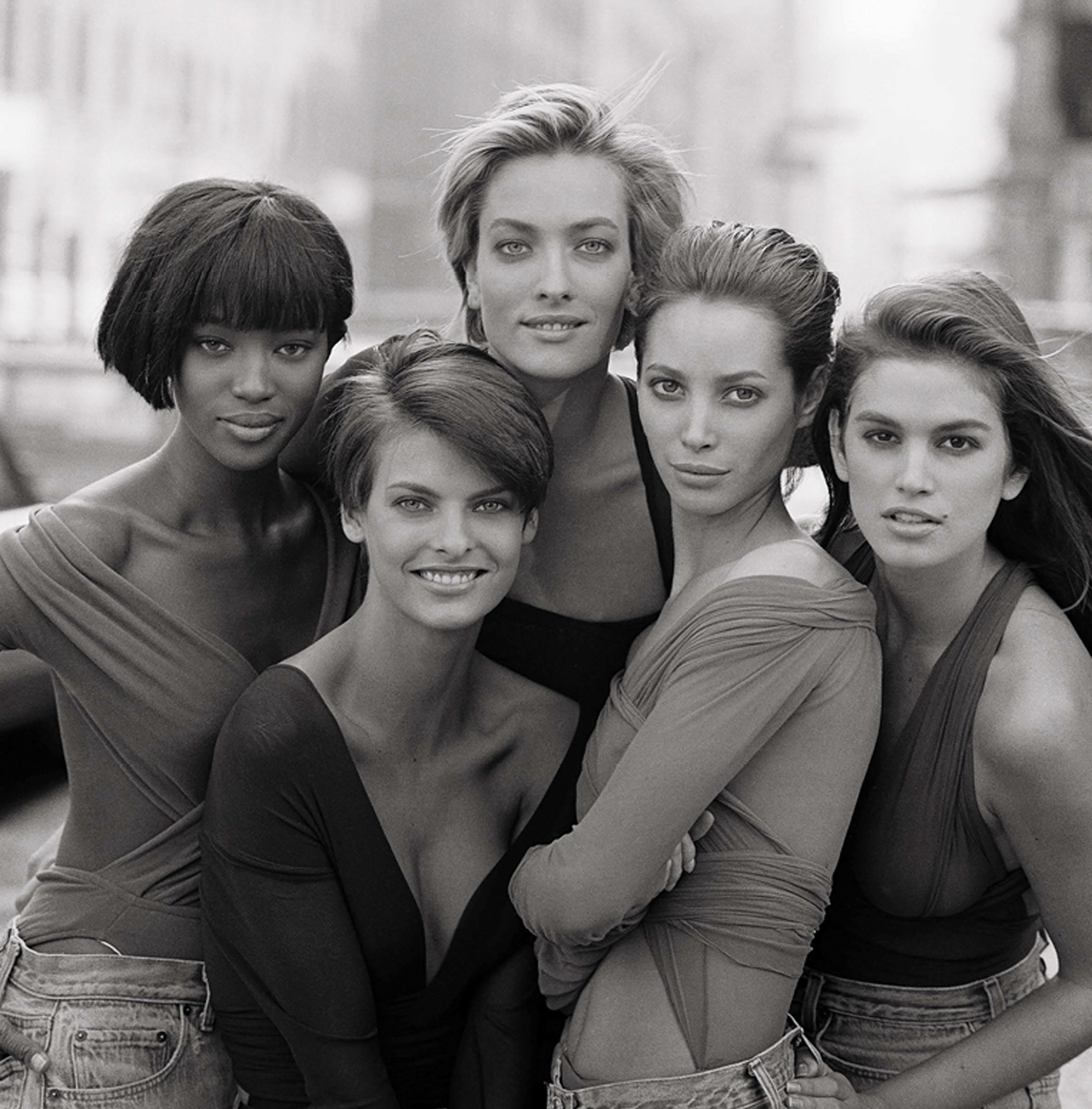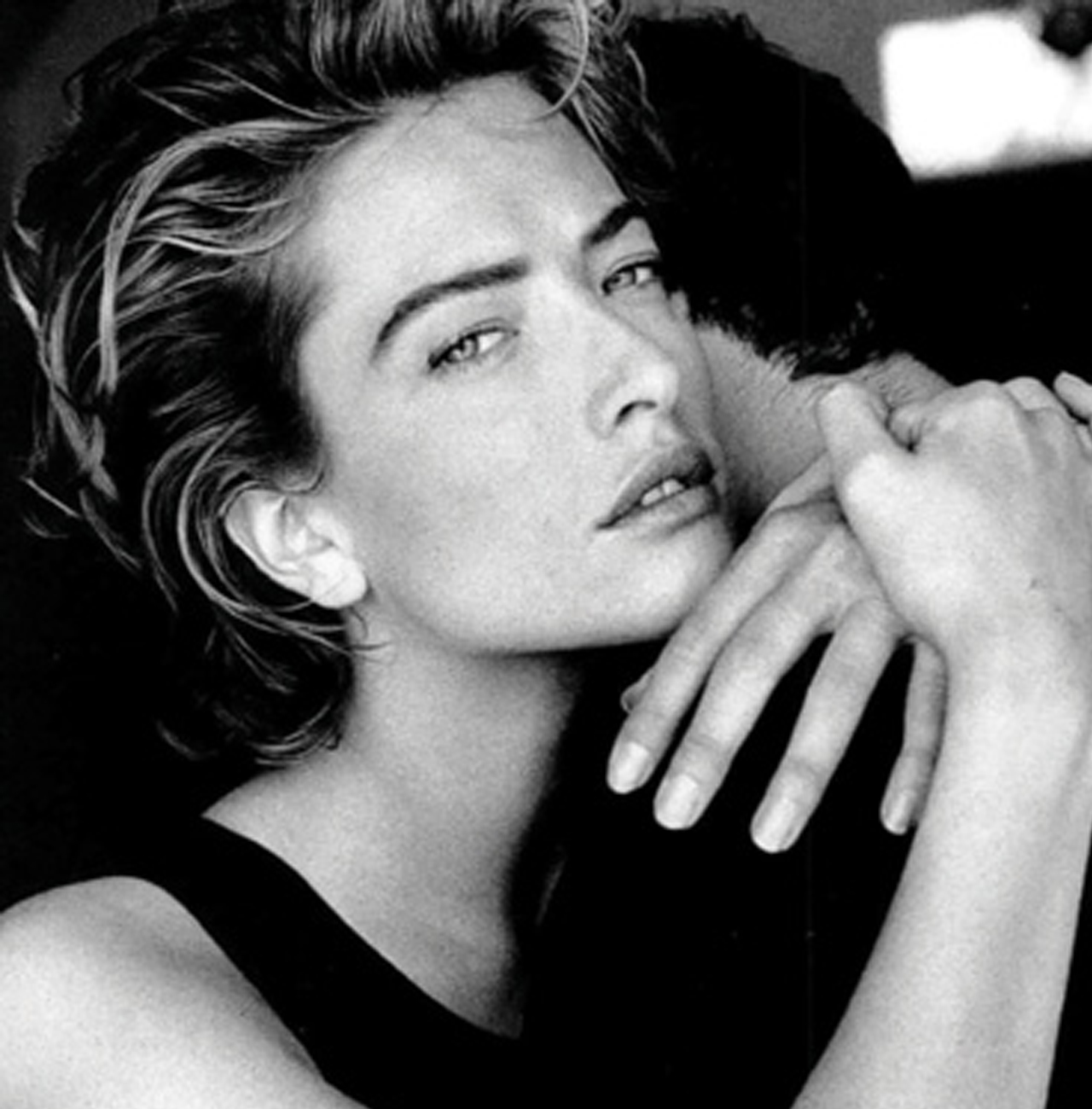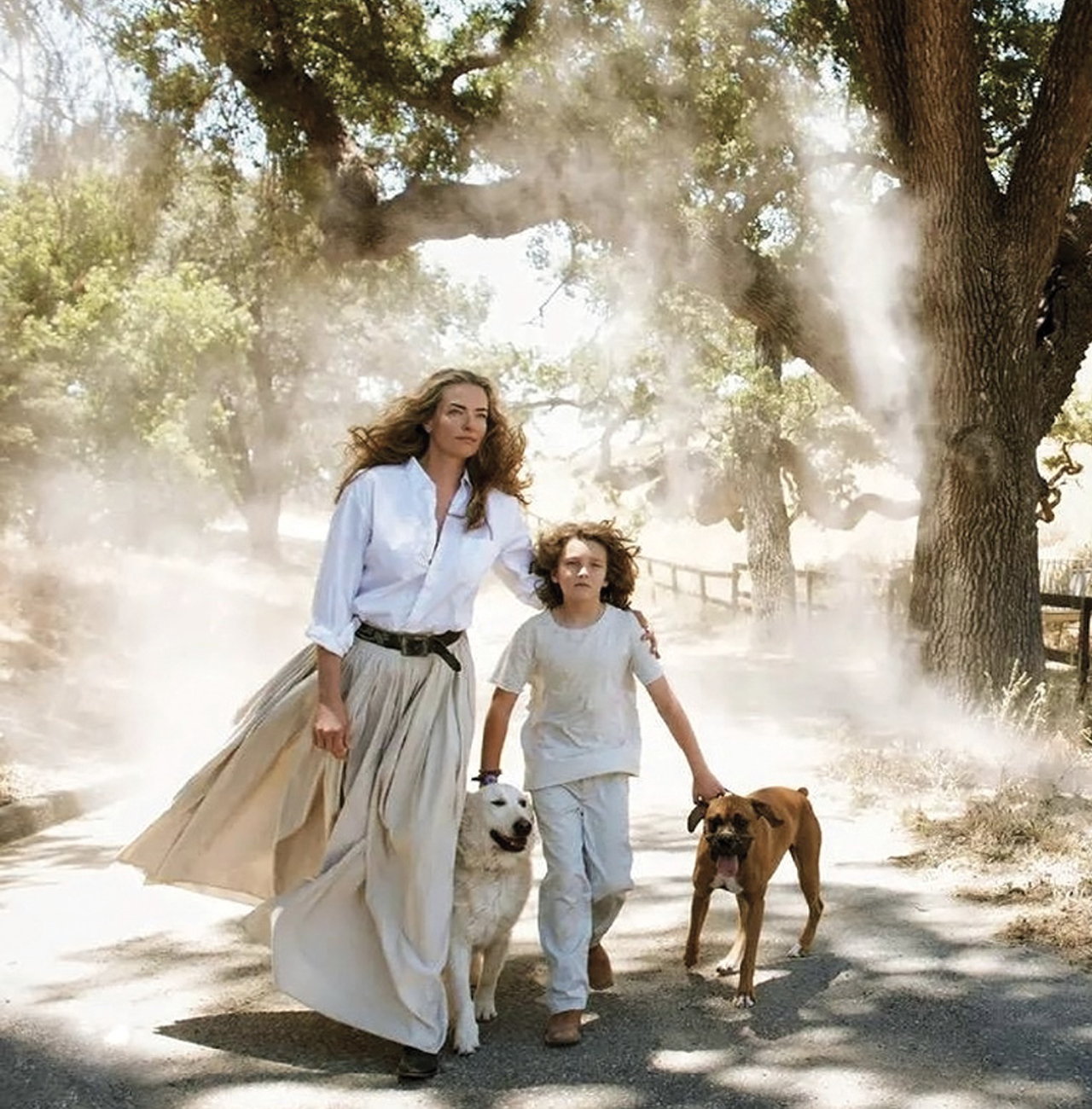
Photo by Peter Lindbergh for Vogue Italy, October 2016
“I believe in aging gracefully,” she used to say but didn’t have time to prove it to the end. Her premature passing left us bereft of the chance to watch this magnetic beauty growing old, with the same self-possession and passion with which she lived her life in the tumultuous, fully-exposed, and glorious years of her youth.
As we belonged to the same generation and cultural background, I always recognized in Tatjana Patitz the European flair that made her stand out from the crowd wherever she was. Mastering both sophistication and the elegance of refusal, she embodied authenticity in a sea of artifice and vanity, while remaining an enigma to the industry and audience alike. In a strange yet explicable way, I felt heartbroken by her untimely demise.
Born in Hamburg and raised in Sweden, Tatjana was discovered in 1983, at 17, when she placed third in the finals of an Elite Model Contest in Stockholm. She won a trip to Paris and a limited-time contract, but it took until the late ‘80s for her career to really take off.
It was around this time that she had the magical encounter with German photographer Peter Lindbergh, whose work would be instrumental for her career and for whom she’d model as his beloved muse for the following three decades.
Renowned for his preference for natural beauty and unretouched photos, Peter Lindberg took for Vogue the now-iconic shot of Patitz, together with Estelle Lefébure, Karen Alexander, Rachel Williams, Linda Evangelista, and Christy Turlington, frolicking in their white oxford shirts on the beach in Malibu, in 1988. Lindbergh’s photo “White Shirts: Six Supermodels, Malibu” set in motion the Supermodels era and changed forever the way we see fashion.

Supermodels in New York, 1990 – Photo by Peter Lindbergh for Vogue UK
Two years later, Lindbergh shot the legendary cover for 1990 British Vogue, showing Tatjana Patitz, Christy Turlington, Naomi Campbell, Cindy Crawford, and Linda Evangelista in the streets of New York, in a black and white photo that became a touchstone of the period’s glamour photography and launched the fabulous five young models as the Supermodels. Lindbergh’s strong aesthetic, and the sense of timelessness inherent to his images, transformed the women he photographed into heroines of their time, personalities who became supermodels, to later be known only by their first names.
About Patitz, Lindbergh wrote in his book, 10 Women, “I admire Tatjana because she always stays herself. She’s very soft, but at the same time she’s very strong and knows how to stand up for what she thinks, and it’s always very enriching to be with her. It’s impossible not to admire her and over the years not to be just a little bit in love with her.”
The British Vogue’s January 1990 supermodels cover inspired George Michael to invite the same cast to appear and lip-sync in his “Freedom ’90” music video. That went down in history like one of Tatjana’s best-known appearances, at the height of the MTV era, and put posters with Fab5 on every teenager’s bedroom wall worldwide. And then, they walked for the Versace fashion show in 1990, which sealed them as stars who transcended the realm of fashion.
Tajana Patitz went on with a flourishing career, becoming known as well for her work on television commercials, which employed her striking beauty for humorous effect. She had a role in a 1988 Levi’s commercial opposite male model Bruce Hulse, which was banned in the UK for the intense sexual chemistry, another one in a 1990 commercial for Stainmaster carpeting, named by Entertainment Weekly one of 1991’s best advertisements, and a few film and television roles in the 1990s, most noteworthy in the crime drama “Rising Sun” (1993), based on a Michael Crichton novel, alongside Sean Connery and Wesley Snipes.
She scored more than 130 covers, according to Elite, and appeared in countless major magazines. She marched for luxury brands such as Chanel, Yves Saint Laurent, Versace, Valentino, Ralph Lauren, Calvin Klein, Salvatore Ferragamo, Karl Lagerfeld, Helmut Lang, Donna Karan, Jean Paul Gaultier, and Vivienne Westwood. During her career, Tatjana Patitz had long-standing working relationships with Peter Lindbergh, Herb Ritts, and Patrick Demarchelier, but she worked with other famous photographers, such as Irving Penn, Helmut Newton, Richard Avedon, Annie Leibovitz, Steven Meisel, Sheila Metzner, Wayne Maser, Gilles Bensimon, Francesco Scavullo, Inez and Vinoodh.

Photo by Patrick Demarchelier for Vogue Italy, 1990
But what made Tatjana Patitz so unusual, so different, so singular?
As she told Vogue in a 1988 interview, “people always said that I looked special; that I didn’t look like anyone else. And I was going to make it because of that.”
She was indeed distinct from her peers. When they separated the women from the girls, she stood out for her womanly allure, assumed and knowing, never that of a naive ingenue. A true Germanic beauty – statuesque, edgy, cool, intense, and sinfully seductive, she was a force to be reckoned with and commanded any room she stepped into. The piercing gaze of her dangerously hypnotic blue eyes, which had the perfect combination of fire and ice, gave her the “otherworldly look” widely recognized by the industry.
Photographer Matthew Rolston said of Patitz, in 1990, “There’s a depth, an emotional quality in her that’s truly extraordinary.”
“Her features are a bit off; she’s not a typical, commercial beauty, but when I shoot her, I’m never bored. Her looks have power, strength, intensity,” said celebrated photographer Herb Ritts.
“It’s hard to get a bad picture of Tatjana. She’s very photogenic, which is very rare, and she looks different in every light,” added photographer Patrick Demarchelier.
“Tatjana was always the European symbol of chic, like Romy Schneider-meets-Monica Vitti,” remembered Anna Wintour, global editorial director of Vogue. “She was far less visible than her peers – more mysterious, more grown-up, more unattainable – and that had its own appeal.”
Apart from the other original supermodels, Patitz tried to distance herself from the fashion industry. She decided to make her home not in New York or Paris, but in California, where she moved in 1989, at the height of her fame, so she could be closer to nature and her animals. “I always thought [fashion and modeling] wasn’t what I was into; as that was what I was doing. It didn’t define me”, she said.

Tatjana Patitz with son Jonah – Photo by Peter Lindbergh, California, 2012
A lifelong animal lover, she collaborated for decades with the PETA association and the nonprofit Return to Freedom Wild Horse Conservation. “The horse, to me, represents freedom. My favorite place to see anything in the world is from on top of a horse. I have horses and my passion for horses to thank for staying grounded. I don’t know what I’ve learned from horses, but maybe I’ve learned everything,” she confessed in a video filmed at Return to Freedom Wild Horse by Kurt Iswarienko.
She continued to work in fashion throughout her mature years, but she chose her projects “very selectively,” she told Mercedes-Benz’s 63Magazine in 2016, seeking to “combine my work as a model with my vocation as a protector of nature and animals.”
“Living here and coming back to this place has been like a sigh of relief, in a way,” Tatjana Patitz said in 2009 to The Guardian, discussing the refuge she found in her ranch in the Santa Ynez Valley, California, and roaming the Santa Barbara horse country’s wilderness with her son Jonah, now 19, her “source of happiness.”
Her last appearance was in 2019 when Tatjana Patitz walked the runway at Milan fashion week for Etro’s fall-winter 2019/2020 show.
Behind the public persona, who traveled the world sometimes on 40 flights a month, there was a woman of extraordinary kindness and exquisite emotional depth. Diana Addison Lyle was close to Tatjana and describes her as “a well-read person who found the need to study life and human behavior; always polite, respectful, kind, courteous and gracious; a woman who never had a vain bone in her body. She was an artist who saw fashion as an art form. Everybody in the industry loved her because they saw something special in her – and aspired to attain that specialness.” Says Benjamin Lindbergh, son of the late Peter Lindbergh, “Tatjana will be remembered for her natural kindness, her inner beauty, and her extraordinary intelligence. My father’s work is inextricably linked to her image, a unique combination of understated strength and effortless elegance that inspired him throughout his career.” Peter Lindbergh passed in 2019, and Benjamin Lindbergh is the President of the Peter Lindbergh Foundation.
Peering through tens of her photos to choose for this article, I found myself again mesmerized by the magnetism of her lynx eyes, by their inescapable attraction, and asked myself once more, what was the source of her power? Maybe it was the fact that she “never sold her soul,” as Patitz said in a 2020 interview.
Or maybe it was that she knew the answer to the oldest mystery in the world – of who we are and what we are to each other, to ourselves, to time.
“I hope you’re riding on a horse in endless meadows with that smile on your face and the wind blowing in your hair,” Helena Christensen posted to her Instagram account.
I like to think of her sharing that smile with Peter again, while he captures – as only he knows – the spell of her ethereal grace one last time, not so much with his camera as with the shutter curtains of his heart.






